19 FEBRUARY 1997 - VERY SHORT RANGE FORECAST FOR THE RAPID CYCLOGENESIS AND THE COMMA FEATURE
by ZAMG
19 February 1997/06.00 UTC - Meteosat IR image; yellow: height contours 1000 hPa 06.00 UTC, green: height contours 1000 hPa 12.00 UTC, blue:
height contours 1000 hPa 18.00 UTC
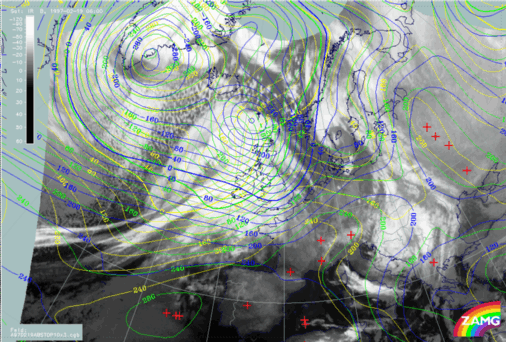
The surface minimum, which is already well developed at 06.00 UTC (yellow in the image), shows a distinct north-eastward displacement as well as a further deepening during the next 12 hours, which is another sign for the intensity of the ongoing Rapid Cyclogenesis.
The surface trough also propagates quickly eastward and reaches England at 18.00 UTC. This is also in accordance with the displacement of the TFP and gives some indication for the Comma feature.
|
19 February 1997/06.00 UTC - Meteosat IR image; yellow: shear vorticity 300 hPa 06.00 UTC, green: shear vorticity 300 hPa 12.00 UTC,
blue: shear vorticity 300 hPa 18.00 UTC
|
19 February 1997/06.00 UTC - Meteosat IR image; yellow: positive vorticity advection (PVA) 300 hPa 06.00 UTC, green: positive
vorticity advection (PVA) 300 hPa 12.00 UTC, blue: positive vorticity advection (PVA) 300 hPa 18.00 UTC
|
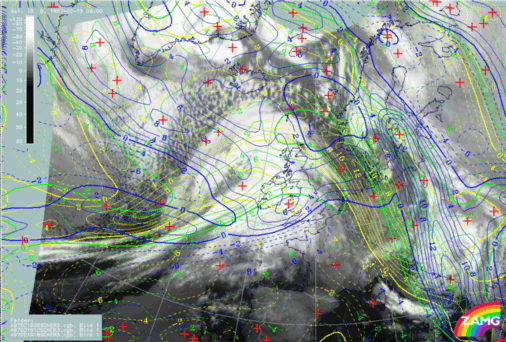
|
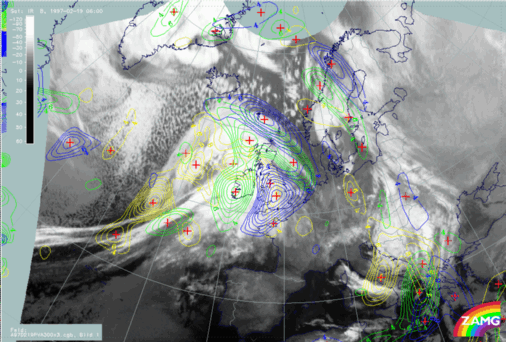
|
|
19 February 1997/06.00 UTC - Meteosat IR image; yellow: curvature vorticity 300 hPa 06.00 UTC, green: curvature vorticity 300 hPa
12.00 UTC, blue: curvature vorticity 300 hPa 18.00 UTC
|
19 February 1997/06.00 UTC - Meteosat IR image; yellow: positive vorticity advection (PVA) 500 hPa 06.00 UTC, green: positive
vorticity advection (PVA) 500 hPa 12.00 UTC, blue: positive vorticity advection (PVA) 500 hPa 18.00 UTC
|
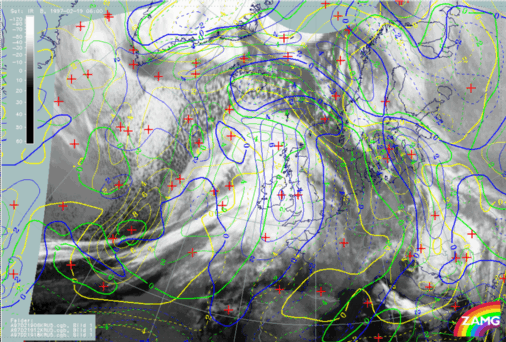
|
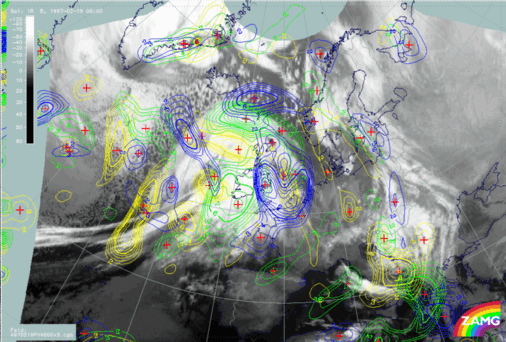
|
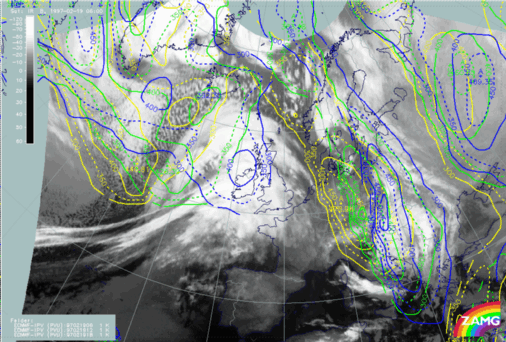
|
|
|
19 February 1997/06.00 UTC - Meteosat IR image; yellow: height of PV = 2 units 06.00 UTC, green: height of PV = 2 units 12.00 UTC,
blue: height of PV = 2 units 18.00 UTC
|
So summarizing, the single conceptual models represented by typical cloud systems in the satellite images can be forecast with help of other key parameters (mostly numerical parameters) of these conceptual models quite well.


